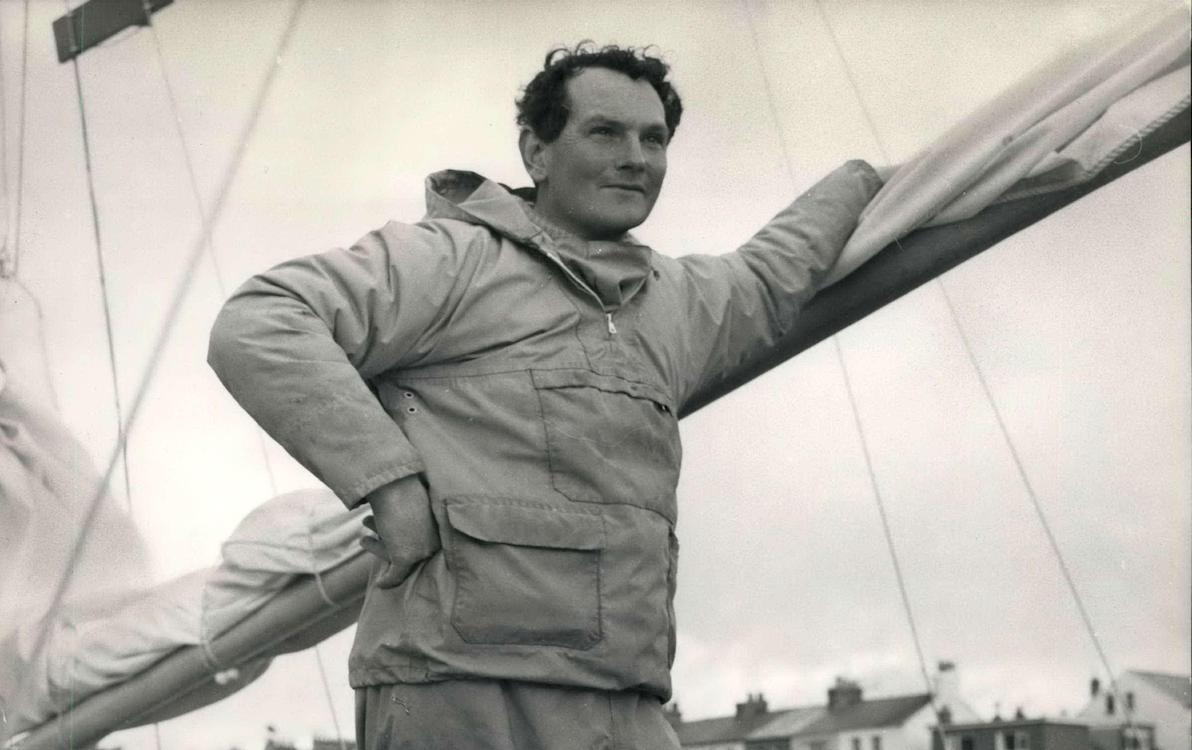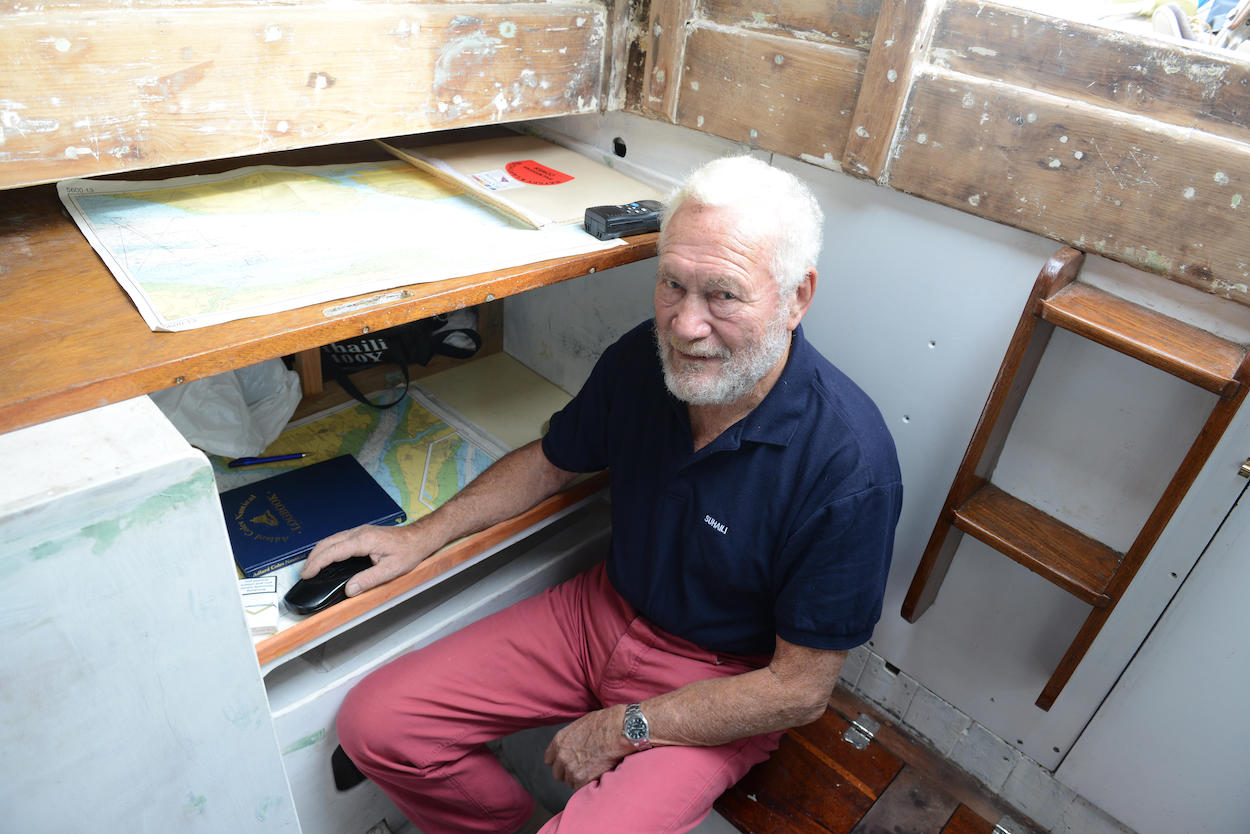Margaret Norris muses on what it takes to sail around the world – from the first 1968/9 Golden Globe Race to the current Vendée Globe
Kevin Escoffier onboard PRB was forced to abandon the vessel and take to the liferaft during the current Vendée Globe/ Jean-Marie Liot/PRB
With Isabelle Joschke having retired from the Vendée Globe this week due to a damaged keel, there are now 26 skippers remaining in the solo, non-stop round-the-world race, including British sailor Pip Hare, who has just rounded Cape Horn. This got me thinking about how ocean racing began, and how it’s all changed.
As a sailor of 14ft dinghies, who likes an enjoyable but not too stressful sail, I choose my conditions carefully: Force 4 for an exciting sail; Force 5 and I know it will be wet with the chance of a capsize.
So I have great admiration for the men and women who choose to sail our planet’s oceans solo or with a crew, trying to be the oldest, youngest or fastest, travelling with the winds or against them but always rushing towards the low pressure systems to go ever quicker.
Nowadays they sail expensive high tech boats with satellite phones, fax machines, access to the latest weather data and GPS, so they and others know their position within a few metres. It was all very different in 1968 when nine sailors set out to try to circumnavigate the globe, solo and non-stop. It had never been done before and nobody knew if it was even possible.
Technology was basic. Radios sometimes worked and sometimes didn’t and boat positions had to be determined using sextants and stars. The skippers were very much on their own and they would have to take food and boat spares to last for what could be a 10-month passage. The Sunday Times offered a £5,000 prize and called it the Golden Globe Race. Only one of the nine would make it to the finish and for one the race would end in tragedy.
Tough guys
John Ridgway and Chay Blyth were more than ready to give it a go. They were tough Army guys who relished a challenge. They’d already rowed across the Atlantic together in a 20ft open boat and even though neither liked the sea very much, they independently decided they would now sail round the world.
Unfortunately they bought boats more suited to coastal sailing than the rigours of the Southern Ocean and Blyth’s more immediate problem was that he couldn’t sail and his navigation wasn’t great either.
By the time he put to sea, he had only done six miles of solo sailing and his idea of navigating to the Atlantic was ‘down the Channel and turn left’.
He took lots of sailing books with him so he could swot-up on the way. They came in handy when he encountered his first storm near Madeira and he turned to them for advice. He described it as “going to hell with instructions”.
Amazingly, it was the boats themselves, and not the men, which proved unworthy of the challenge and forced the pair to give up. They remained determined and undaunted and both returned to round-the-world sailing within a few years.
Ridgway sailed round twice, each time with a crew but Blyth, having learnt a lot from those books (and his experience), became the first person to sail alone, ‘the wrong way’ (against the prevailing winds) a couple of years later on his 59ft yacht British Steel.
Meanwhile, French competitor Bernard Moitessier abandoned the 1968 Golden Globe Race while in a strong position, and decided to keep on sailing non-stop on his 39ft ketch Joshua “to save his soul”.
When he reached Tahiti, he’d circled the globe one and a half times, and wrote a book about the voyage, La Longue Route (The Long Way), regarding it as a spiritual journey as much as a sailing adventure.

Donald Crowhurst on his 41-foot trimaran Teignmouth Electron/ Alamy
The person for whom the race would end tragically was Donald Crowhurst, an electronics engineer and amateur sailor. He’d found it hard to get sponsorship so had remortgaged his home in order to build a revolutionary trimaran, Teignmouth Electron. Trimarans at that time were thought to be totally unsuitable for ocean sailing. They were light and fast but were impossible to right once capsized so Crowhurst built a self-righting mechanism into his.
Unfortunately time was against him and when he left British shores, the computer which was to sense the capsize and activate the righting mechanism wasn’t even built. He took all the components with him to build it during the race, but left behind critical pieces of equipment and tools to make repairs to his boat.
He got as far as the Falkland Islands but realised that Teignmouth Electron would never survive the Southern Ocean and at some point he came up with the idea of staying in the Atlantic for what he considered the right amount of time before heading back home and claiming he’d sailed all the way round. To that end he started to keep two logbooks, one with his correct position and another with a totally made-up set which he hoped would fool race organisers when they were scrutinised back in Britain.
The deception he was perpetuating played heavily on his mind and towards the end of his time at sea, his logbooks were filled with pages and pages of mostly incoherent ramblings – the thoughts of a tortured man. Teignmouth Electron was found alone and abandoned seven months after she’d set out from England. Crowhurst was assumed to have taken his own life because he couldn’t face the shame of his elaborate hoax being revealed nor the financial ruin that would come with it. He left behind a wife and young children.

Sir Robin Knox-Johnston on Suhaili/ Alamy
The only man to get to the finish and claim the £5,000 prize was Robin Knox-Johnston. His 32ft Suhaili was made of Indian teak and Knox-Johnston had already sailed her solo from India to England, so knew her quirks well.
Slow but steady
She was small and sturdy, but definitely not quick. She was a workhorse like her skipper, who was quite content with his own company and capable of fixing the numerous problems thrown at him during the voyage. When the self-steering mechanism broke halfway through the race, he lashed the tiller and by balancing the sails, he was able to leave the steering long enough to go below to sleep for a few hours at a time. He had no radio for a while so his family didn’t even know if he was still alive until he entered the busier shipping lanes and vessels began reporting his position. He arrived home after being at sea for 312 days – a staggering feat of seamanship. He donated his prize money to a fund for Crowhurst’s widow and children.
Fifty years later, the record for the fastest solo, non-stop circumnavigation of the globe is held by Frenchman, François Gabart. In 2017, he sailed his 100ft Maxi trimaran Macif 28,000 miles in 42 days and 16 hours at an average speed of 27 knots.
A psychiatrist described Robin Knox-Johnston as ‘distressingly normal’ but I’d suggest these brave sailors are anything but!




